As an Amazon Associate, I earn from qualifying purchases
Choosing sustainable and durable cookware involves selecting materials that are eco-friendly and long-lasting. This ensures a healthier kitchen and a reduced environmental footprint.
Selecting the right cookware is crucial for both health and sustainability. Opting for durable and eco-friendly materials not only enhances your cooking experience but also contributes to a greener planet. Popular choices include stainless steel, cast iron, and ceramic, which are known for their longevity and minimal environmental impact.
These materials resist wear and tear, making them excellent investments for any kitchen. Moreover, sustainable cookware often comes from ethically sourced materials, ensuring minimal harm to the environment. Making informed choices in cookware can lead to a healthier lifestyle and a more sustainable future.
The Importance Of Sustainable Cookware
Choosing sustainable cookware helps protect the planet. It also ensures healthier meals. Let’s explore why it matters.
Environmental Impact
Many cookware materials harm the environment. Non-stick pans often contain harmful chemicals. These chemicals can pollute water and soil. Sustainable cookware uses eco-friendly materials. Examples include stainless steel, cast iron, and ceramic. These materials last longer and reduce waste.
| Material | Environmental Impact |
|---|---|
| Non-stick | High pollution |
| Stainless Steel | Low pollution |
| Ceramic | Low pollution |
| Cast Iron | Low pollution |
Health Considerations
Some cookware releases toxins during cooking. Non-stick pans can release PFOA when heated. PFOA is harmful to health. Sustainable cookware avoids these harmful chemicals. Cast iron adds iron to your food. This can help with iron deficiencies.
- Non-stick pans can release harmful chemicals.
- Cast iron adds beneficial iron to your diet.
- Stainless steel is generally safe and durable.
- Ceramic cookware is free from harmful coatings.
Choose sustainable cookware for better health. It also helps protect our planet.

Credit: davidsuzuki.org
Materials Matter: Analyzing Cookware Composition
Choosing the right cookware is crucial for sustainable living. The materials used in cookware affect its durability and eco-friendliness. Understanding the composition of cookware helps in making informed choices.
Pros And Cons Of Common Materials
| Material | Pros | Cons |
|---|---|---|
| Stainless Steel |
|
|
| Cast Iron |
|
|
| Aluminum |
|
|
Emerging Eco-friendly Materials
New materials are making waves in the cookware industry. They focus on sustainability and durability.
Ceramic cookware is gaining popularity. It is non-toxic and free from harmful chemicals. Ceramic cookware is also recyclable and biodegradable.
Recycled Steel is another eco-friendly option. It uses less energy in production. Recycled steel cookware is durable and long-lasting.
Bamboo is a renewable resource. Bamboo utensils are lightweight and biodegradable. They are also resistant to heat and stains.
Durability And Performance: What To Look For
Choosing sustainable and durable cookware is essential for a reliable kitchen. Durable cookware ensures long-term use and high performance. This section will guide you on what to look for in terms of durability and performance.
Longevity Of Cookware
Durability is a key feature in cookware. Stainless steel and cast iron are known for their long-lasting properties. These materials resist wear and tear. They also withstand high temperatures.
Check for thickness and weight. Thicker cookware tends to be more durable. Heavier pieces indicate better build quality. Non-stick coatings should be scratch-resistant. This prolongs the life of your pots and pans.
Look for riveted handles. They provide better stability. Welded handles might loosen over time. Cookware with lifetime warranties often indicates higher quality.
Heat Distribution And Retention
Good cookware should have excellent heat distribution. This ensures even cooking. Copper and aluminum are great conductors of heat. They heat up quickly and evenly.
Stainless steel is also good but not as conductive. Many stainless steel cookware have an aluminum or copper core. This improves heat distribution.
Heat retention is equally important. Cast iron retains heat very well. It keeps your food warm longer. Enameled cast iron offers the same benefits but is easier to clean.
| Material | Heat Distribution | Heat Retention |
|---|---|---|
| Copper | Excellent | Good |
| Aluminum | Excellent | Fair |
| Stainless Steel | Good (with core) | Good |
| Cast Iron | Good | Excellent |
Understanding these factors helps in choosing the right cookware. Look for materials that offer both durability and performance.
The Lifecycle Of Cookware: From Production To Disposal
The lifecycle of cookware is a journey from production to disposal. Understanding this journey helps you choose sustainable and durable cookware. It ensures you make eco-friendly and long-lasting choices for your kitchen.
Manufacturing Processes
The manufacturing process of cookware involves several steps. Raw materials, such as aluminum, stainless steel, or cast iron, are sourced. These materials are then melted and shaped into cookware items. This process often involves high energy consumption and emissions.
Some brands use recycled materials to reduce environmental impact. Cookware is then coated with non-stick or other surfaces. These coatings may contain chemicals, affecting both the environment and health. Choosing cookware with eco-friendly coatings can make a big difference.
Recycling And Disposal Options
Recycling cookware helps reduce waste and conserve resources. Many types of cookware, especially metal ones, can be recycled. However, it’s important to check local recycling guidelines. Some areas may not accept certain materials or coatings.
Disposal options depend on the type of cookware. Non-stick pans, for example, often can’t be recycled due to their coating. In such cases, donating usable items can extend their lifecycle. Many charities accept gently used cookware.
Below is a table summarizing recycling and disposal options for various cookware types:
| Cookware Type | Recycling Options | Disposal Options |
|---|---|---|
| Stainless Steel | Recyclable at most facilities | Donate if in good condition |
| Aluminum | Recyclable at most facilities | Donate if in good condition |
| Cast Iron | Recyclable at scrap metal yards | Donate if in good condition |
| Non-stick | Not usually recyclable | Dispose of in regular trash |
Choosing sustainable cookware supports the environment. It reduces waste and conserves resources. Understanding the lifecycle of cookware helps you make informed decisions. You can contribute to a greener planet by choosing wisely.
Certifications And Standards For Eco-friendly Products
Choosing sustainable and durable cookware is a smart choice for your kitchen. Understanding the certifications and standards for eco-friendly products is essential. These certifications help you identify reliable and environmentally friendly options. Knowing the regulations and compliance standards ensures you make an informed decision.
Recognizing Reliable Eco-certifications
Look for trusted eco-certifications when choosing cookware. These certifications indicate that the product meets high environmental standards. Some of the most recognized certifications include:
- ENERGY STAR: Products with this label use less energy.
- Green Seal: This label ensures the product is environmentally responsible.
- Cradle to Cradle: This certification focuses on the entire lifecycle of the product.
- Forest Stewardship Council (FSC): Ensures the wood used is from responsibly managed forests.
These certifications provide confidence that your cookware is sustainable. They also help reduce your environmental footprint.
Regulations And Compliance
Ensuring that cookware meets regulations and compliance standards is vital. These standards guarantee the product is safe and environmentally friendly. Key regulations to consider include:
| Regulation | Purpose |
|---|---|
| REACH | Regulates chemicals to protect human health and the environment. |
| RoHS | Restricts hazardous substances in electrical and electronic equipment. |
| ISO 14001 | Sets standards for an effective environmental management system. |
| FDA Compliance | Ensures materials used in cookware are safe for food contact. |
Always check if the cookware complies with these standards. This ensures the product is safe and sustainable. Following these guidelines helps you make better choices for your kitchen and the environment.

Credit: xtrema.com
Cost Versus Value In Sustainable Cookware
Choosing sustainable cookware is a smart decision for your kitchen. Understanding the cost versus value can guide you in making the right choice. Let’s explore the initial investment and long-term savings of sustainable cookware.
Initial Investment
At first glance, sustainable cookware may seem expensive. But consider what you’re getting. High-quality materials like stainless steel and cast iron last longer. They resist wear and tear better than cheaper alternatives.
Here’s a quick comparison:
| Type of Cookware | Initial Cost | Durability |
|---|---|---|
| Non-Stick | $30-$50 | 1-2 years |
| Stainless Steel | $70-$150 | 10+ years |
| Cast Iron | $40-$100 | Lifetime |
Investing in sustainable cookware means spending more upfront. But it pays off in the long run.
Cost Savings Over Time
High-quality cookware saves you money over time. Here’s how:
- Longer Lifespan: You replace cheap cookware more often.
- Energy Efficiency: Sustainable cookware heats evenly, saving energy.
- Health Benefits: Better materials mean fewer chemicals in your food.
Let’s break it down:
- Initial cost of non-stick cookware: $40
- Replacing every 2 years over 10 years: $200
- Initial cost of stainless steel cookware: $100
- Replacing once in 10 years: $100
In this example, stainless steel is cheaper over 10 years.
Choosing sustainable cookware is an investment in your kitchen’s future. It saves money and benefits your health.
Care And Maintenance For Long-lasting Use
Choosing sustainable and durable cookware is a wise investment. Proper care ensures it lasts for years. Let’s explore some tips for maintaining your cookware. This will help in keeping it in top condition.
Proper Cleaning Techniques
Cleaning your cookware correctly is crucial for its longevity. Avoid harsh chemicals or abrasive scrubbers. These can damage the surface.
- Hand wash your cookware with mild soap and warm water.
- For stubborn stains, use a paste of baking soda and water.
- Avoid soaking cookware for long periods to prevent damage.
Using a soft sponge or cloth is recommended. Dry immediately to prevent water spots.
Storage And Handling Best Practices
Proper storage and handling help in keeping cookware in good shape. Follow these tips to ensure your cookware remains durable:
- Stack pots and pans with a protective layer between them.
- Hang skillets and pans to save space and avoid scratches.
- Use pot protectors or towels to prevent friction damage.
- Avoid dropping or banging cookware to prevent dents and scratches.
Store lids separately to avoid damaging the non-stick surface.
Common Mistakes To Avoid
Avoid these mistakes to prolong the life of your cookware:
- Overheating cookware can damage the surface and affect performance.
- Using metal utensils can scratch and damage non-stick surfaces.
- Never put hot cookware in cold water. This can cause warping.
By following these care and maintenance tips, your sustainable cookware will last longer and perform better.

Credit: xtrema.com
Top Picks For Sustainable And Durable Cookware
Choosing sustainable and durable cookware is essential for an eco-friendly kitchen. Quality cookware can last for years, reducing waste and saving money. Here are our top picks for sustainable and durable cookware options that stand out.
Brand And Product Recommendations
| Brand | Product | Material | Key Features |
|---|---|---|---|
| Le Creuset | Cast Iron Dutch Oven | Cast Iron | Durable, heat retention, non-stick |
| GreenPan | Venice Pro Ceramic Non-Stick | Ceramic | Non-toxic, scratch-resistant, eco-friendly |
| All-Clad | Stainless Steel Tri-Ply | Stainless Steel | Durable, even heating, dishwasher safe |
Customer Reviews And Testimonials
“This Dutch oven is a game-changer!” – Jane D.
“So durable and cooks evenly every time.” – Mark P.
“I love that it’s non-toxic and easy to clean!” – Sarah W.
“Best ceramic pan I’ve ever used.” – John K.
“Worth every penny for its durability.” – Emily R.
“Cooks food perfectly and cleans up easily.” – Chris B.
Frequently Asked Questions
Why Do We No Longer Recommend Greenpan?
We no longer recommend GreenPan due to concerns about product durability and customer reviews highlighting issues with non-stick coating. Consider alternative brands for better performance.
What Is The Best And Most Durable Cookware?
The best and most durable cookware is often made of stainless steel or cast iron. These materials offer longevity, even heating, and easy maintenance. Stainless steel resists corrosion, while cast iron provides excellent heat retention. Both options are ideal for various cooking methods.
What Is The Healthiest Type Of Cookware To Use?
The healthiest cookware includes stainless steel, cast iron, and ceramic. These materials are non-toxic and durable. Stainless steel resists corrosion, cast iron adds iron to food, and ceramic is free from harmful chemicals. Avoid non-stick coatings that can release toxins when overheated.
What Factors Should You Consider When Choosing Pans And Pots?
Consider material, heat conductivity, durability, size, and handle comfort. Choose non-stick or stainless steel based on your needs.
What Is Sustainable Cookware?
Sustainable cookware is made from eco-friendly materials like stainless steel, cast iron, or recycled aluminum.
Why Choose Durable Cookware?
Durable cookware lasts longer, reducing waste and saving money over time.
Which Materials Are Eco-friendly For Cookware?
Eco-friendly cookware materials include stainless steel, cast iron, ceramic, and recycled aluminum.
Is Stainless Steel Cookware Sustainable?
Yes, stainless steel is durable, recyclable, and often made from recycled materials.
How Long Does Cast Iron Cookware Last?
Cast iron cookware can last for generations with proper care and seasoning.
What Are The Benefits Of Ceramic Cookware?
Ceramic cookware is non-toxic, non-stick, and made from natural materials.
Conclusion
Choosing sustainable and durable cookware benefits your health and the environment. Opt for materials like stainless steel and cast iron. These options ensure longevity and reduce waste. Investing in quality cookware now saves money and resources in the long run.
Make a conscious choice for a better kitchen and a greener planet.
As an Amazon Associate, I earn from qualifying purchases


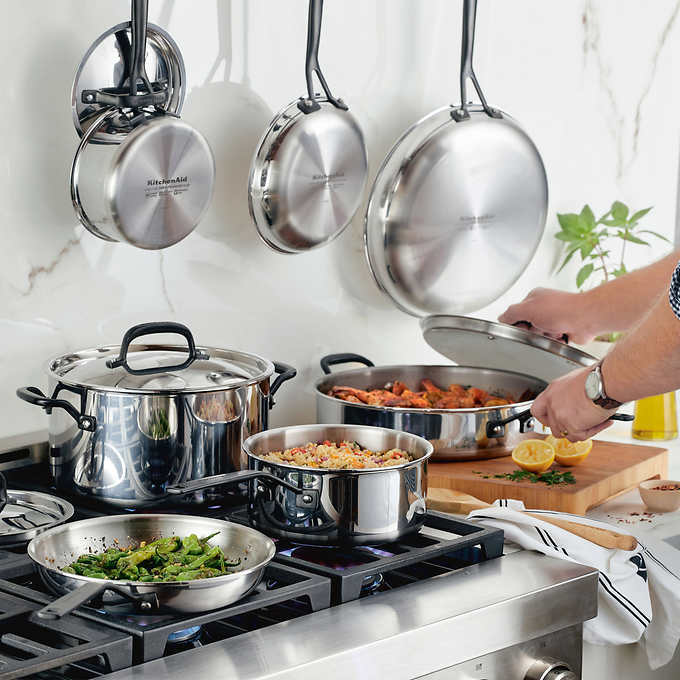




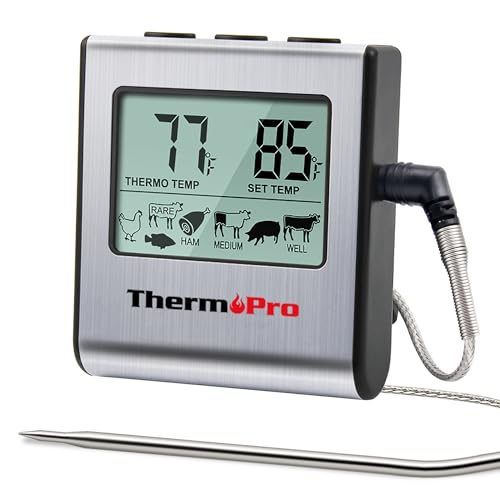
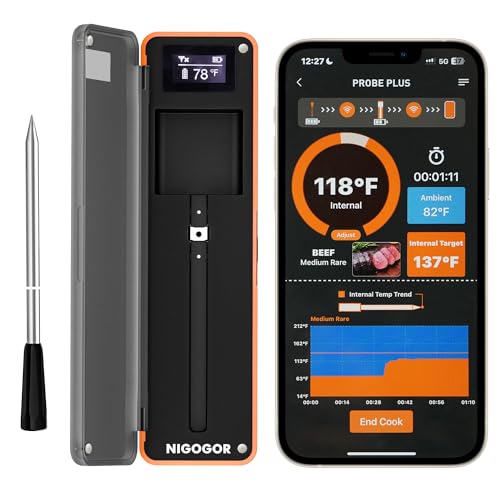
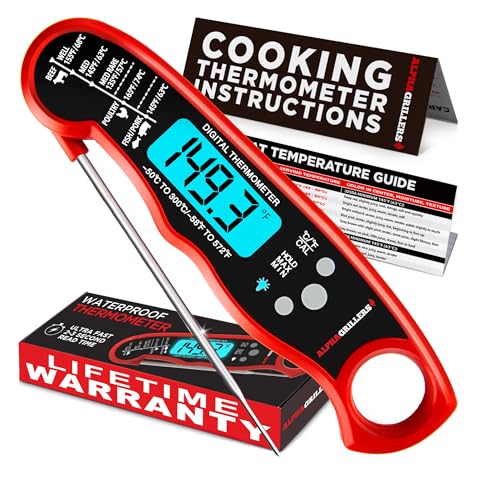
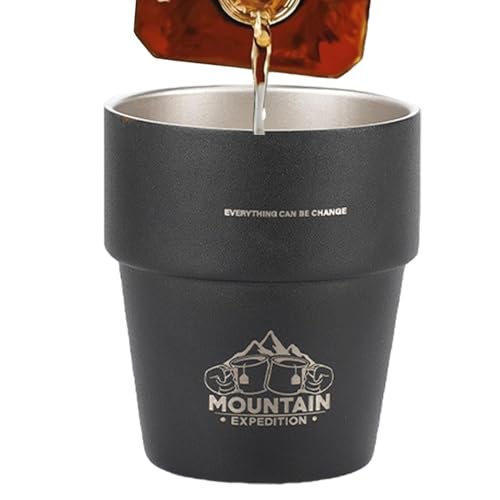
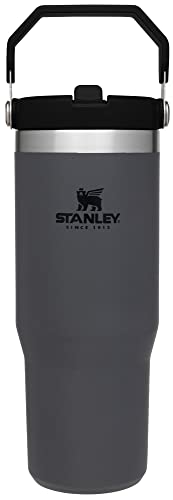
Leave a Reply